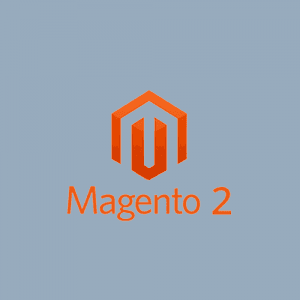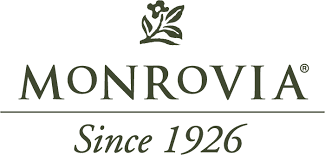Magento 1 to Magento 2 Upgrade

Migrate, Consolidate, and Integrate with Magento
How does migrating to Magento 2 benefit your online store? How about making your site faster, better integrated, and easier-to-use. For example, take our client, Monrovia. Monrovia’s project involved consolidating three different websites, designing a custom user-experience, implementing page caching, and crafting a Magento 2 ERP integration. We did this all in collaboration with multiple departments inside Monrovia.


Discovering the Project Needs
Monrovia is an online garden store with Independent Garden Centers (IGC’s) strategically located across the U.S. Their previous ecommerce network included three separate web platforms that were all linked. One platform included a WordPress website for product displays and descriptions. But when adding product(s) to a cart for purchase, it would direct users to a Magento site for shopping cart updates and checkouts. Any product changes to the cart would direct users back to the WordPress site. The third and final website was another WordPress site to house their SEO-worthy content.
So two WordPress sites existed. One for a blog and another for product listings, and a Magento site for all ecommerce transactions. If this sounds confusing or inefficient, you’d be correct. This configuration resulted in poor user experience (U/E) with a lot of room for error when using the site. Let’s see how a Endertech solved these problems during this Magento Migration project.
Migrating to Magento 2
A migration for each of their websites was necessary to simplify and consolidate Monrovia’s web presence. As you may know, support for Magento 1 (M1) from Adobe ended as of June 2020. Therefore, migrating to Magento 2 (M2) was necessary to ensure the future viability of Monrovia’s online store.
Using the Uber Theme migration tool, our Magento developers effectively moved e-Commerce store data from M1 to M2. The tool helps fast-track transfers of key products, customer and order data, and existing store configurations to meet M2’s new architecture and database design.
Migrating Custom Features, Functions and Data Objects
On top of the urgent upgrade to M2, custom migration and development were necessary to handle Monrovia’s custom data and unique business rules. Considering state restrictions and Monrovia’s strategically located growing centers, it was important to develop a system where product data and availability matched unique customer locations for custom product pricing, availability, and shipping source and costs.
Custom Pricing
One of those custom features was implementing Zone Pricing, something that’s not possible to handle natively inside of M2. By suppressing the standard M2 shipping options, we implemented a new shipping alternative to include the client’s network of IGC’s. With prices now tied to a customer’s zip code, only interrelated products, price, and pickup-locations show up on screen. This is important because prices vary by state, a price determined by distance and weight of plants.
Custom Product Availability
As mentioned, unique state guidelines can determine plant choices for customers because certain plants are restricted in some states. Inside of Magento2, we segmented plants into “Allowed” and “Un-Allowed” products. The rules in place help meet product showcase product choice but also increase the longterm success for plants to blossom naturally given the local climate, which, in turn, increases customer satisfaction.
Custom Shipping
On a related front, the Store Locator/Store Pickup feature was important because Monrovia doesn’t handle shipping. They process the last delivery to the customer using one of thousands of IGC partners. Therefore, integrating the large database of IGC’s for customers to choose from provided convenience and details for final shipping. Customers choose which store is most convenient, again, empowering customers throughout the checkout process.One thing to notice is the focus on customer location. The theme is that location is the crucial factor to serving accurate shipping locations, plant availability, pickup store choices, and final shipping costs. Now, with custom modifications properly in place, every customer will experience a unique transaction that’s tailored to their location.
Full Page Caching for Better UE
With so much data being processed in the background, we implemented full page caching to ensure the site maintained high speeds. Fast sites make for happy customers and better Google results. Page caching allows servers to deliver copies of a web page to users instead of downloading each time a user visits a page. This includes hitting the back button on your browser.
Because every customer’s location is different, every customer’s set of pages is different. Because of this, our developers made a few tweaks to make it work. To make this possible, it was necessary to implement Javascript (JS) code to allow loading of page data that’s related to customer location data. With Full Page Caching, even after consolidating three separate websites into one, the site is faster and more user-friendly, while maintaining customization features vital to the business.
Backend ERP Systems are Key for Custom Ecommerce Development
Enterprise Resource Planning (ERP) is the integration of business processes for complete management, mostly using purposeful software. The full integration to the backend ERP system for Monrovia makes everything work seamlessly. The final backend ERP combines all aspects into one system that combines each function of Monrovia’s business processes.
An addition to our client’s ERP was Product Information Data (PID) that handles all the descriptive information of a plant/product. This information includes product details like growth rate, sunlight needs, plant history and much more!
Another ERP implementation was the Availability Feed. This works together with inventory and pricing data. Inside of Magento, we know this as a Configurable Product, in this case, the plant itself. The plant can be configured into a custom option by choosing a plant size or a final item count to purchase. It provides the customer the availability from the growing center that’s best located to process the order and final shipping. This provides a fully custom experience to customers that’s efficient and in compliance with state mandates.
One of the ERP additions also includes the Growing Location (Map) of a particular plant. With this feature, it automatically displays a visual map in the product page that shows where a plant is more susceptible to growing. Another feature that confirms customer location is ideal for their final product choice.
To conclude all the ERP integrations is the Zone Pricing Update. I touched on custom prices earlier, but the ERP integration is the driving force that makes it possible. Having it integrate with the ERP assures accurate prices reflect no matter the customer location.
Leverage the Blog for Ecommerce
The existing blog Monrovia was hosting was also part of the migration into the Magento 2 site. With the Blog-Pro plugin from Amasty, our team migrated Monrovia’s entire blog to fit within the Magento 2 structure.
Aside from the SEO friendly features of the plugin, it helps connect the blog to search results completed from the home page that utilizes the existing collection of blog posts. Anytime a user searches for a specific plant, related blog content also appears in a new tab on the results page. Implementing this provides more helpful features that help the user learn, discover, and select the best choices for their purchase.
Continuously Updating the Data
With several backend functions providing the user a personalized experience, constant data updates are necessary. To ensure continuous data changes are possible without interruption, extensive testing during development was a priority. Our team put every feature and integration to the test proving that no matter how many times inventory, price, blog, locations change, user-experience isn’t affected.
Power of Collaboration for a Custom Ecommerce Solution
Carrying out the project included a wide range of team members from Monrovia’s departments. Arranging schedules and test sessions were divided intelligently between their teams in marketing, IT and their own Magento developers. Successfully completing each stage of development took collaborative efforts that went to highlight the importance of organization even with a score of moving parts.
Custom Ecommerce Development Solves Pains
After consolidating three websites, improving user-experience and site-speed with caching, including a full ERP integration, Monrovia was able to replace multiple websites and eliminate it’s “technical debt.” By developing an all-in-one web-based solution, business and customer functions have been fast-tracked to provide customization at every stage. Breaking away from the basic options that ecommerce platforms provide is intimidating, but with expert guidance and development, the gains positively increase in the long term. Start your custom web-development project to see what your website is fully capable of.



